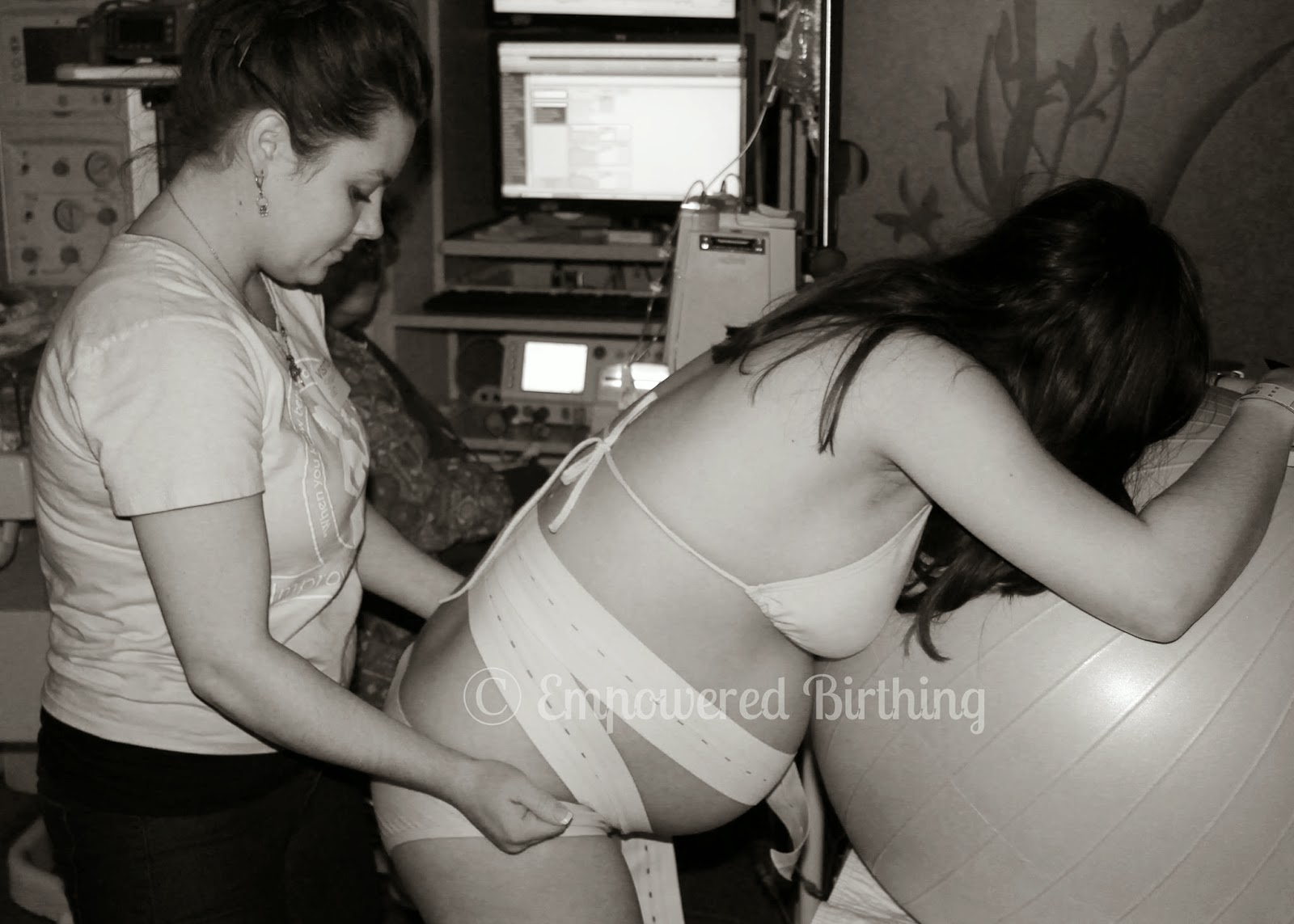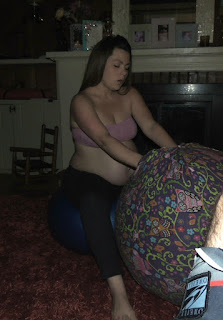Movement and Labor
Being active in labor is important for both baby and mother. Walking, changing positions, and even just standing and swaying, can help the baby descend into the pelvis. It can also help to alleviate discomfort that mother could be experiencing as well. I think we can all agree that is a win/win situation.
Research tells us that changing positions while laboring may result in less severe pain, a decrease in need for pain medications, contributes to shorter labors, and could play a part in a reduction of cesarean sections. Being active may also contribute a sense of personal freedom for the mother, and being in control of the birthing process.
Some hospital procedures may seem to prevent the woman from being able to move freely as an active participant during labor. Such as fetal monitoring, which is usually done for 20 minutes each hour, intravenous fluids being given for the duration of labor, and blood pressure cuff attachment. However, all of these procedures can be performed while the mother is in motion/active without adversely affecting the monitors or the results. Mothers may walk around, sit/rock on a birth ball, alternate leg lunges, enjoy a shower, or slowly lean on their partner and "slow dance". All of this and more is possible while in labor and possibly on a monitoring device.
Many women who labor for extended periods of time, or who may encounter particularly strong waves during labor may wish to rest. During the resting period, she will be able to remain subtly active by rotate side lying positions and using a peanut ball/stack of pillows between the knees to keep the pelvis open and provide additional comfort. Even while resting it is possible to create a more favorable environment for both mother and baby.
Much like the resting mother, a woman who has received an epidural may also remain active. During the laboring period the mother can choose from several positions to maintain an active and help progress labor while still in the bed. There is the upright "throne" position, with the back of the bed propped upright, and several pillows under moms arms. There is also either side lying position, as well as side lying with one knee at a right angle. If mother feels able, she can choose hands and knees on a pillow or ball. There are always different movements for labor even with an epidural.
Movement is an important role for the process of labor. Bringing baby down into the pelvis and comforting mother all while she is in control of her desired movements. Having the knowledge of several available positions to use during monitoring periods provides an effective tool to birthing mothers.
references:
Mothers' position during the first stage of labour - Lawrence A, Lewis L, Hofmeyr G, Styles C
Care Practice #2: Freedom of Movement Throughout Labor Teri Shilling, MS, CD (DONA), IBCLC, LCCE, FACCE, Amy M. Romano, MSN, CNM, and Joyce T. DiFranco, RN, BSN, LCCE, FACCE
Research tells us that changing positions while laboring may result in less severe pain, a decrease in need for pain medications, contributes to shorter labors, and could play a part in a reduction of cesarean sections. Being active may also contribute a sense of personal freedom for the mother, and being in control of the birthing process.
Some hospital procedures may seem to prevent the woman from being able to move freely as an active participant during labor. Such as fetal monitoring, which is usually done for 20 minutes each hour, intravenous fluids being given for the duration of labor, and blood pressure cuff attachment. However, all of these procedures can be performed while the mother is in motion/active without adversely affecting the monitors or the results. Mothers may walk around, sit/rock on a birth ball, alternate leg lunges, enjoy a shower, or slowly lean on their partner and "slow dance". All of this and more is possible while in labor and possibly on a monitoring device.
 | |
| mother laboring over birth ball while on fetal monitor |
Many women who labor for extended periods of time, or who may encounter particularly strong waves during labor may wish to rest. During the resting period, she will be able to remain subtly active by rotate side lying positions and using a peanut ball/stack of pillows between the knees to keep the pelvis open and provide additional comfort. Even while resting it is possible to create a more favorable environment for both mother and baby.
Much like the resting mother, a woman who has received an epidural may also remain active. During the laboring period the mother can choose from several positions to maintain an active and help progress labor while still in the bed. There is the upright "throne" position, with the back of the bed propped upright, and several pillows under moms arms. There is also either side lying position, as well as side lying with one knee at a right angle. If mother feels able, she can choose hands and knees on a pillow or ball. There are always different movements for labor even with an epidural.
Movement is an important role for the process of labor. Bringing baby down into the pelvis and comforting mother all while she is in control of her desired movements. Having the knowledge of several available positions to use during monitoring periods provides an effective tool to birthing mothers.
references:
Mothers' position during the first stage of labour - Lawrence A, Lewis L, Hofmeyr G, Styles C
Care Practice #2: Freedom of Movement Throughout Labor Teri Shilling, MS, CD (DONA), IBCLC, LCCE, FACCE, Amy M. Romano, MSN, CNM, and Joyce T. DiFranco, RN, BSN, LCCE, FACCE

Comments
Post a Comment